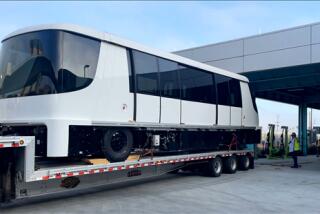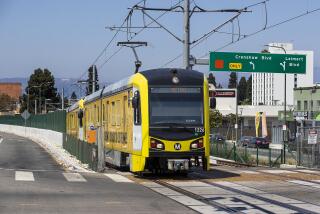Move that LAX runway already
The city officials who run Los Angeles International Airport have been trying for what seems like forever to move the north runway 260 feet closer to the boundary separating the airport from the community of Westchester. The move would put more space between the two main runways and allow pilots to use a central taxiway without risking collision. When the City Council takes up the matter this week, it should complete this chapter of the long, sorry saga of neighborhood versus airport and approve the north runway move.
But what if safety is a trumped-up issue and the real purpose of moving the runway is to expand airport capacity? What if airport and city officials haven’t yet given enough thought to how they will reconfigure a portion of Lincoln Boulevard to accommodate the move, and what if construction will become a two-year traffic burden to Westchester? What if the long-delayed plan to modernize the airport — of which the runway modification is just one part — makes LAX a slightly less miserable place for pilots as well as passengers, and takes the pressure off the city’s airport in Ontario, making it even less likely than it is now that airlines and passengers would choose to fly to the Inland Empire rather than LAX? What if the extended light-rail system envisioned in the airport’s modernization plan still wouldn’t drop passengers at the terminals but would require them to transfer to yet another bus or rail line?
In that case, the council still should approve the move of the north runway. Let’s get on with it.
The runway move is in many ways merely a symbol for airport authorities and business groups on one side and neighborhood activists on the other of a long struggle over not just the airport’s future but over grievances that go back decades. Revisiting them is a distraction. The airport is not going to roll up its runways and slink into the Pacific. Nor would Westchester residents want it to, if they are honest with themselves about the degree to which their community relies on LAX to support local tourism and freight-oriented businesses. The new runway is needed for a new generation of aircraft. And, yes, safety is a legitimate concern, as numerous studies assert. Even a recent study that claims runway safety is sufficient doesn’t argue that it can’t or shouldn’t be substantially improved.
With the relocated runway, an ample buffer of airport-owned land would continue to separate Westchester from takeoffs and landings, and in fact, maybe, finally, Los Angeles World Airports, the city agency that oversees LAX, could build the job-creating commercial projects there as well as the neighborhood amenities that have long been on the drawing board.
Traffic concerns are real, but construction can’t be put off forever. Plans for traffic mitigation and a rational set of timelines and priorities can’t be completed until airport officials finally know whether they are going to be able to move the runway.
As for the so-called regional solution, it will at best be a supplement to a modern, efficient and safe LAX. And for goodness’ sake, before trying to do anything else with Ontario airport, change the name so unhappy passengers who get rerouted there due to heavy coastal fog will at least know they’re not being flown to a wind-swept wheat field somewhere in central Canada.
More to Read
A cure for the common opinion
Get thought-provoking perspectives with our weekly newsletter.
You may occasionally receive promotional content from the Los Angeles Times.










